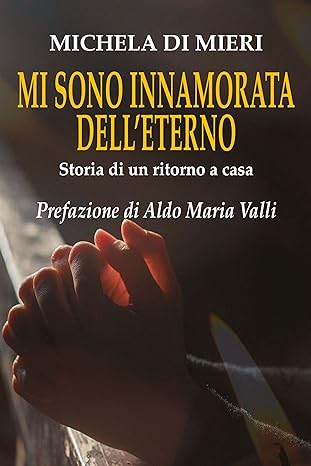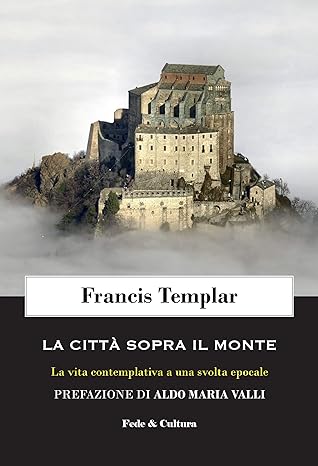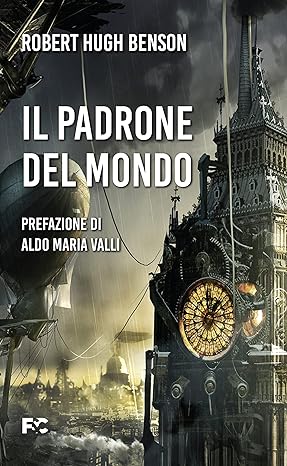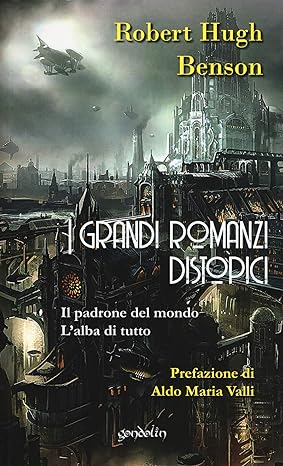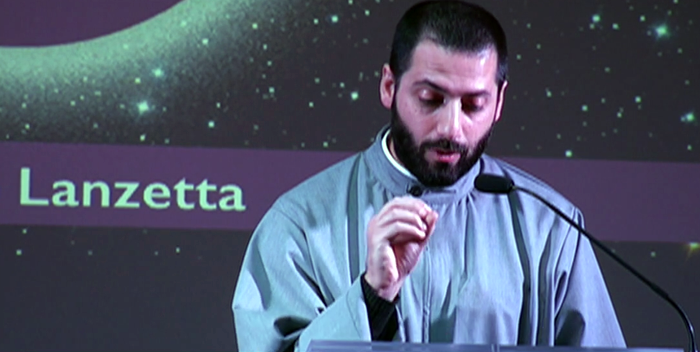
Vatican II and the Calvary of the Church
Cari amici di Duc in altum, grazie alla traduzione di Giuseppe Pellegrino vi propongo la versione in lingua inglese dell’articolo del padre Serafino Maria Lanzetta pubblicato in italiano il 13 luglio.
***
Dear friends of Duc in altum, in the debate that is taking place about the Second Vatican Council, Father Serafino Maria Lanzetta has offered an authoritative contribution, which he sent to me and I am happy to offer to you.
***
Recently, the debate about the correct interpretation of the Second Vatican Council has been rekindled. It is true that every council has interpretative problems and very often opens new ones rather than resolving the ones that preceded it. Mystery always carries with it a tension between what is said and what is unspeakable. It is enough to recall that the consubstantiality of the Son with the Father that was declared against Arius by the Council of Nicea (325) was only firmly established sixty years later with the Council of Constantinople (381), when the divinity of the Holy Spirit was also defined. In our own time, about sixty years after the Second Vatican Council, we have not seen the clarification of a doctrine of the faith but a further obscuring of it. The Abu Dhabi Declaration (4 February 2019) pretends to establish with total certainty that God wills the plurality of religions just as he wills the diversity of colors, sexes, races, and languages. In the words of Pope Francis on the return flight after the signing of the document: “From the Catholic point of view the document did not go one millimeter beyond the Second Vatican Council.” It is certainly more a “symbolic” link with the “spirit of the Council” that echoes in the text of the “Declaration on Human Fraternity.” And yet, a link is there, and it is certainly not the only one between Vatican II and the church of today. This is a sign that there is a difference between the Council of Nicea and Vatican II that needs to be taken into consideration.
The hermeneutic of continuity and reform gave us the hope of being able to read the new teaching of Vatican II in continuity with the preceding magisterium, in the name of the principle which maintains that any council, if celebrated following the necessary canonical requirements, is assisted by the Holy Spirit. Thus if orthodoxy is not readily apparent, one looks for it. In the meantime, however, already here there is a problem that is by no means secondary. Relying on hermeneutics to solve the problem of continuity is already a problem in itself. In claris non fit interpretatio, says a well-known adage: if continuity did not need to be demonstrated with interpretation there would be no need for a hermeneutic as such. As it is, the continuity [of Vatican II with the Tradition] is not readily apparent but must be demonstrated or rather interpreted. From the moment that one has recourse to a hermeneutic, we enter an ever-growing process of interpretation in continuity, a process that, once begun, does not stop. As long as there are interpretations, there will be an unending interpretative process, and thus there will be the possibility that any interpretation can be confirmed or denied because it is either adequate or prejudicial in the eyes of the next interpreter.
The hermeneutic is a process; it is the process of modernity that posits man as existing and captures him within the radius of being here and now. An echo of this is the problem of the Council that tries to dialogue with modernity, which in turn is itself an existential process not easily solved in hermeneutic circles. If we rely only on hermeneutics to resolve the problem of continuity, we run the risk of enveloping ourselves in a system that posits continuity as existing (or, on the other hand, rupture) but in fact does not reach it. And it does not seem that we have reached it at all today, almost sixty years since Vatican II. There is a need not for a hermeneutic that gives us the guarantee of continuity, but of a first principle that tells us whether the hermeneutic utilized is valid or not: this principle is the faith of the Church. It is no wonder that at such a distance from Vatican II we are still arguing about the hermeneutic of continuity of a council with respect to preceding councils and with respect to the Faith of the Church, when the Faith itself has left us for many years now and shows no sign of returning.
Ever since it was proposed, the hermeneutic of continuity seemed to have some cracks in it; more recently it seems that even Joseph Ratzinger has somewhat distanced himself from it. In his notes relating to the roots of sexual abuse in the Church (published exclusively for Italy in Corriere della sera, on 11 April 2019), the Second Vatican Council is repeatedly called into question. With more theological freedom and no longer in an official capacity, Benedict XVI points to a sort of Biblicism that originated in Dei Verbum as the main doctrinal root of the moral crisis in the Church. In the struggle engaged in at the Council, an attempt was made to be liberated from the natural foundation of the moral law in order to base morality exclusively on the Bible. The impact of the Constitution on Divine Revelation – which did not want to mention the role of the Traditio constitutiva, even though Paul VI oversaw its writing – is reflected in the wording of Optatam Totius 16 [The Decree on Priestly Formation], which in fact was later declined out of suspicion that its morality was too “pre-conciliar,” scornfully identified as “manualistic” because it was based in the natural law. The negative effects of such “repositioning” did not delay in making themselves felt and are still under our astonished eyes. In the same notes of Ratzinger we also read a denunciation of so-called “conciliarity” which had become the litmus test of what was truly acceptable and able to be proposed, even to the point of leading some bishops to refute the Catholic Tradition. In the various post-conciliar documents that sought to correct this trajectory, providing correct interpretation of doctrine, serious consideration has never been given to the problem of fundamental theology that was inaugurated by the principle of “conciliarity.” In fact, “conciliarity” is the door that opens up to all the other problems, becoming a free spirit that always dances around and juts out with respect to the text and above all with respect to the Church. It was spoken of during the 1985 Synod of Bishops, but this discussion never crystallized into a clear statement that refuted it.
The hermeneutical problem of Vatican II will never end if we do not face a central and radical point on which depends the clear comprehension of doctrines and their magisterial evaluation. Vatican II presented itself as a council with an exquisitely pastoral purpose. But of course, all of the preceding councils were pastoral in the measure in which they affirmed the truth of the faith and fought against errors. Vatican II chose a new method for a pastoral purpose: the “pastoral method” that became a true program of action. By declaring it several times but never giving a definition of what is meant by “pastoral,” Vatican II presented itself in a new way with respect to other councils. It is the “pastoral council” that more than any other council proposed new doctrines, but chose neither to define new dogmas nor to reiterate any dogma in a definitive way (perhaps the sacramental nature of the episcopate, but on this there was not unanimity). “Pastorality” foresaw an absence of condemnations and a non-definition of the faith, instead offering a “new way” of teaching it for the present time: a “new way” that that influenced the formation of new doctrines and vice-versa. This problem is still felt with all its virulence today when there is a preference for “leaving doctrine aside” for pastoral motives, but this cannot be done without in fact teaching another – different – doctrine.
The “pastoral method” (and it really was a method) played a role of the first order in the Council. It directed the conciliar agenda. It established what was to be discussed and directed the reformulation of several central schemas because they were said to be “unpastoral.” It led to the neglect of common doctrines because they were still disputed (such as for example limbo and the material insufficiency of the Scriptures, reiterated by the ordinary magisterium of the catechisms) and to the embrace of teaching “new doctrines” that had not been theologically debated in any way (such as for example episcopal collegiality and the restoration of the married permanent diaconate). Indeed the “pastoral” rose to the rank of a constitution with Gaudium et Spes (we were accustomed to a constitution being such only in relation to faith), a document so shabby that it even made Karl Rahner’s hair stand on end, who advised Cardinal Döpfner to declare the imperfection of the text from the very beginning, mainly due to the fact that the created order did not appear to have God for its end. And yet Rahner was the promoter of “transcendental” pastoral care.
Thus the Council posed a problem of interpretation in and of itself, and this did not begin with a false reception [after the Council] but right from the discussions in the conciliar aula. Understanding the degree of theological qualification of the conciliar doctrines was not easy even for the Council Fathers themselves, who repeatedly asked for clarification from the Secretariat of the Council. “Pastorality” then also entered into the drafting of the new schema on the Church. For many Council Fathers, the mystery of the Church (in its invisible aspect) was broader than its historical and hierarchical manifestation (its visible aspect), even to the point of maintaining the non-co-extensiveness of the Mystical Body of Christ with the Roman Catholic Church. Were there two juxtaposed Churches? A “Church of Christ” on one side and “the Catholic Church” on the other? This risk arose not from the verbal change with “subsistit in” but fundamentally from having renounced the doctrine of the members of the Church (there was a shift from de membris to de populo) in order not to offend Protestants as imperfect members. Today it seems that more or less everyone belongs to the Church. If we were to ask a question – “Did the Council Fathers maintain that the Mystical Body of Christ is the Catholic Church?” – how would many people respond? Many Council Fathers said no, and this is why we are where we are.
The “spirit of the Council” was thus born in the Council itself. It hovers through Vatican II and its texts; it is often a reflection of a “pastoral spirit” that is not clearly identifiable, that builds or demolishes in the name of “conciliarity,” which often simply meant the theological sentiment of the moment that had more hold because the voice of the one who was speaking was stronger, not only in the media but also in the council aula and in the doctrinal Commission. A hermeneutic that does not understand this fundamental issue ends up being overtaken by a problem that is still unresolved today: Vatican II is treated as an “absolute” of the faith, as if it is the very identity of the Christian, as the passe-partout in the “post-conciliar” Church. The Church is divided because it depends on the Council and not vice-versa. This in turn generates another problem.
First the Council as an absolute of faith and then the Pope as an absolute of the Church are in fact two sides of the same coin, the same problem of absolutizing first one and then the other, while forgetting that the Church comes first, then the pope with his pontifical magisterium and then the council with its conciliar magisterium. The current problem of a pope seen as an absolute ruler arises as an echo of the idea of the council as absolutus and this is due to the fact that the “spirit of the council,” the spirit of an “event” that was superior to the texts and above all to the context, has been emphasized as the key criterion of measurement. Is it a coincidence that those who seek to impose the magisterium of Francis make continual appeal to Vatican II, portraying anyone who criticizes Francis as rejecting Vatican II? The fact is that the link between Francis and Vatican II is entirely symbolic and almost never textual. The popes of the Council and of the post-council are saints (or shortly will be) while the Church languishes, plunged into a silent desert. Doesn’t this tell us something?
As for the latest positions that have been expressed, paradoxically, it does not seem to me that the reasoning of His Excellency Archbishop Viganò and Cardinal Brandmüller are terribly far apart. Viganò prefers to forget Vatican II; he does not think that correcting its ambiguous doctrines is a solution, because as he sees it there is an embryonic problem in Vatican II, a modernist coup right from the beginning that compromised not its validity but its catholicity. Brandmüller instead prefers to adopt the method of the historical reading of the documents of the Council, especially for those doctrines most difficult to read in line with the Tradition. This permits him to affirm that documents like Nostra Aetate, to which should also be added Unitatis Redintegratio and Dignitatis Humanae, are now only of historical interest, because the correct interpretation of their theological value has been given by the subsequent magisterium, especially by Dominus Iesus. If Viganò prefers to forget the Council and Brandmüller suggests overcoming it by historicizing it without directly striking it, thereby avoiding an ad hoc magisterial correction and without having to abandon the hermeneutic of continuity, it seems that the difference between the two positions is only in their respective modalities. However, it could be argued that it will be difficult in a future Enchiridion of Councils, updated by this recent historical-theological discussion, to make Vatican II appear only as a council of historical interest by means of a “historicizing hermeneutic” [such as Brandmüller proposes]. And nothing will prevent an “Abu Dhabi 2.0” from explicitly referring to Nostra Aetate, ignoring Dominus Iesus once again, or for Amoris Laetitia to invoke Gaudium et Spes while bypassing Humanae Vitae. It should not be forgotten that the Bologna School tried to do something of this nature with the Council of Trent, maintaining that it is now only a “general Council” and no longer an ecumenical council, of an inferior rank from a theological point of view. Vatican II certainly is not Trent, but this is only from the theological point of view, not the historical one.
We must also be aware of the fact that the historical hermeneutic, which leaves the text in its context and to the ideas of its editor, is well adapted to Vatican II as a pastoral council fully immersed in its time. The same hermeneutic however does not work with the Council of Trent, for example. If in fact we would try to historicize the doctrine and canons on the Holy Sacrifice of the Mass, we would find ourselves doing the same work as Luther with respect to the doctrinal tradition, and we would favor the work of the neo-Protestants who see the Mass as nothing more than a meal.
Between these two positions is that of Bishop Schneider, which seems more feasible: to correct the ambiguous expressions and doctrines present in the conciliar texts that have given occasion to countless errors accumulated over the course of time since the Council, while not ignoring the many virtuous and prophetic teachings, such as the holiness of the laity and the priesthood of all believers. Bishop Schneider calls “squaring the circle” the effort to see everything in continuity in the name of a right hermeneutic.
We should begin with a sincere act of humility, as Archbishop Viganò proposed, recognizing that we have been fooled by the presumption of resolving all the problems in the name of authority, whether in good faith or bad. Authority either rests on truth or it does not stand. It is not a question of repudiating or cancelling Vatican II, which remains a council of the Holy Church, but rather of correcting all of the distortions, whether in excess or defect. Nor is it a question of declaring victory for the traditionalists but rather of simply recognizing the truth. When Vatican II is finally freed from all of the politics that still surround it, then we will be on a right path.
Father Serafino Maria Lanzetta
________
Translated by Giuseppe Pellegrino
